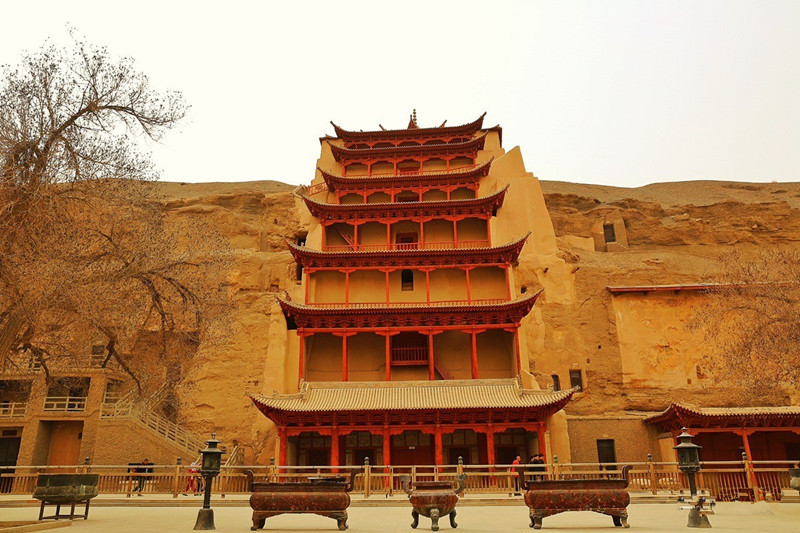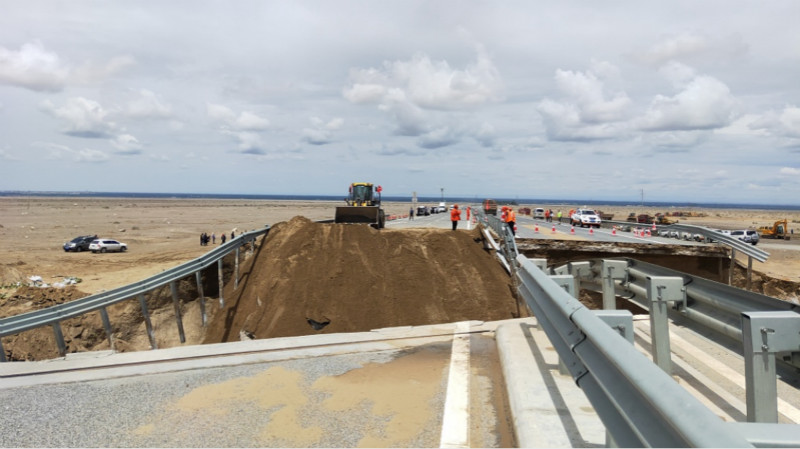
Mogao Grottoes reopens after road damaged by floods
The Mogao Grottoes, one of China’s most famous cultural and historical sites, has reopened after suffering significant damage to its access road due to flooding. Located near Dunhuang in Gansu Province, the Mogao Grottoes are a UNESCO World Heritage site known for their incredible collection of Buddhist cave art, murals, and sculptures that date back over 1,500 years. The site has been a major center of Buddhist learning, art, and culture for centuries and draws tourists, scholars, and researchers from all over the world.
The Flood and Road Damage
In the summer of 2024, severe flooding in the region caused significant damage to the access road leading to the Mogao Grottoes. The road, which is crucial for both local access and tourist visitation, was rendered impassable due to the flooding, leaving the grottoes temporarily closed to the public. The floods caused disruptions in transportation, with the road being washed out in several areas, making it difficult for visitors and staff to reach the site.

Mogao Grottoes, a renowned UNESCO World Heritage Site in northwest China’s Gansu Province, has reopened on Monday morning after the lone road leading to the tourist site was damaged by floods during the weekend, according to the local authority.
From 10 a.m. on Saturday to 9 a.m. on Sunday, incessant rains hit the city of Dunhuang, where the grottoes are located. The area around the Mogao Grottoes received around 40.4 mm of precipitation during the period.
Heavy downpour triggered floods in the Daquan River which flows in front of the Mogao Grottoes. The flood washed away a section of the road connecting the bridge that leads to the site, some 10 km away from the Mogao Grottoes. The shortest distance between the river and the heritage site is no more than 100 meters.

An initial investigation showed that the cultural relics of the Mogao Grottoes had not been affected by floods or rainstorms so far, said Luo Huaqing, deputy director of the Dunhuang Academy of China.
Workers have started to pump out flood water that accumulated in front of the Mogao Grottoes since Saturday night. The rain water pool formed after the excessive rains has been drained out.
As a precaution, Mogao Grottoes remained closed on Sunday, when some 10,000 people were supposed to visit the site, according to the Dunhuang Academy of China. Tourists who bought the tickets are eligible for refund that could be processed from the booking office. Luo said, generally speaking, Mogao Grottoes is closed temporarily due to sandstorms or heavy rains to ensure the safety of tourists and cultural relics.

Such heavy rain, which continued for over 10 hours, is rare here, Luo said.
From 1981 to 2010, the average annual precipitation of the city was 42.2 mm, according to the meteorological bureau of Dunhuang. The bureau also forecasted that the city will receive more rains from late afternoon to the evening on Sunday.
The Mogao Grottoes is home to collections of Buddhist artwork, more than 2,000 colored sculptures and 45,000 square meters of murals, in 735 caves carved along a cliff.
It was first constructed in 366 A.D. For more than 1,000 years, it was a popular marketplace, travelers’ stop, and a religious shrine on the ancient Silk Road. The local arid climate with less rainfall is a major reason that the heritage site has been preserved for thousands of years.
It receives over 1.7 million tourists every year. The grottoes were placed under the management of the Dunhuang Academy of China in 1944.
Source: Xinhua News Agency Update: July 9, 2019











